Saleswhale Blog | 13 Min Read

Marketing: "Why isn't sales calling my leads? We sent the MQLs over two days ago!"
Sales: "I don't have time to work these leads, they aren't ready to buy compared to *these* leads."
What are neglected leads?
Neglected leads are leads sitting in your database with no sales activity.
These are leads that have interacted with your brand and entered your funnel in a meaningful way. No matter where the leads come from, whether they came from webinars, events, free trials, recycled MQLs, eBook downloads, old closed-lost opportunities due to "no decision," etc., you did spend time and money acquiring them.
Neglected leads are a silent, massive problem for demand generation and marketing operations teams.
Think about it: most marketing teams have no problem generating leads at the top of the funnel.
Marketing teams struggle the most with middle-of-the-funnel projects. Specifically, converting leads into sales opportunities and revenue.
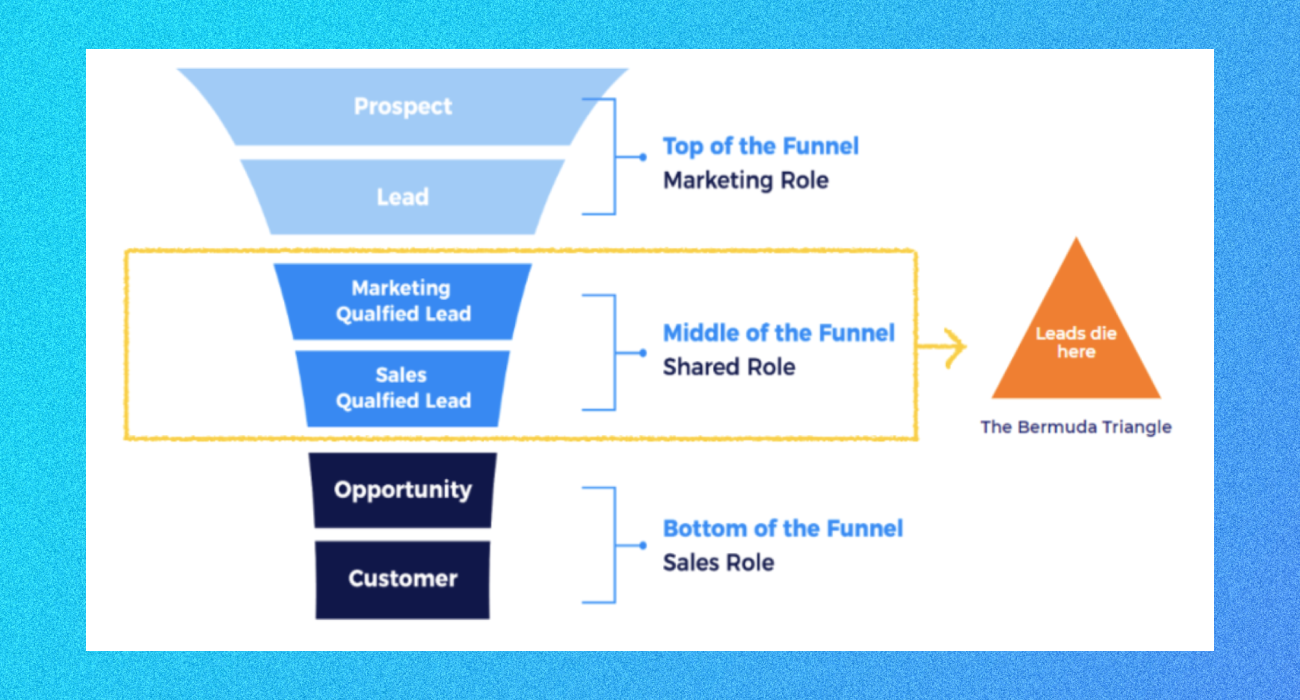 The middle of the funnel is where marketing leads go to die.
The middle of the funnel is where marketing leads go to die.
Here are some statistics to put the above problem into context:
Understanding the root cause behind neglected leads
Most companies have a ton of revenue potential locked up in neglected leads. Unfortunately, it can be complicated to unlock this potential.
Here's the reason why.
The root cause of sales reps ignoring and underworking marketing leads -- is because they hate to do it.

And it's not because salespeople are lazy.
They hate to do it because working on your low-propensity leads is not a fair use of their precious selling time.
On average, we see Marketing Qualified Leads (MQL) convert at 1% to 3% across the 500+ B2B companies we work with at Saleswhale.
The "Glengarry leads"
Put yourself in the shoes of your sales person. Let’s call her Lori.
Marketing generates 100 MQLs and passes them to Lori.
Marketing assures Lori that these leads are ICP (ideal customer profile). These leads have tripped some sort of lead score. Supposedly showing “buying intent” by visiting the pricing page 3 times in the last 24 hours or something.
“These are the Glengarry Leads”, Marketing proclaims.
So excitedly, Lori blocks out 3 hours to work these leads. Precious hours away from existing sales opportunities and deals in flight.
She starts calling and emailing.
By the time she gets to the bottom of the list, she managed to only connect with 6 of these leads. Out of which, probably only 3 or 4 will turn into initial sales meetings.
The vast majority of leads were either unresponsive, out of office, or told Lori they are not ready to talk to a salesperson yet.
When Lori receives the next batch of "Glengarry MQLs" from Marketing, what do you think she's going to do?
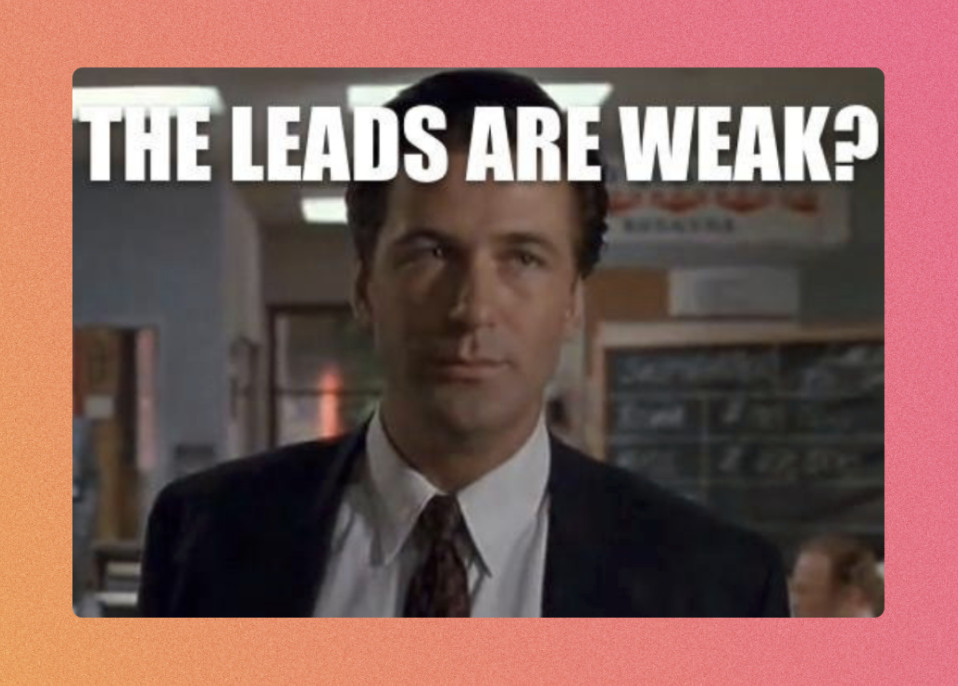
Good intentions don't work
There's a saying by Amazon CEO Jeff Bezos, "Good intentions don't work. Mechanisms do."
To improve a process or to solve a problem sustainably, no company can rely on good intentions like "Sales must try harder." or "Hey Lori, can you do me a favor and follow up with all the marketing leads I sent over?"
That's because people already had good intentions when the problems cropped up in the first place.
Amazon realized early that if you don't change the underlying conditions and background processes that created a problem, you should expect the situation to recur.
Yes -
You can try to build better relationships with Sales. Do weekly Zoom check-ins on the MQLs you are passing them. Set strict lead SLAs. Or even lobby the VP of Sales to force his sales reps to follow up with your marketing leads.
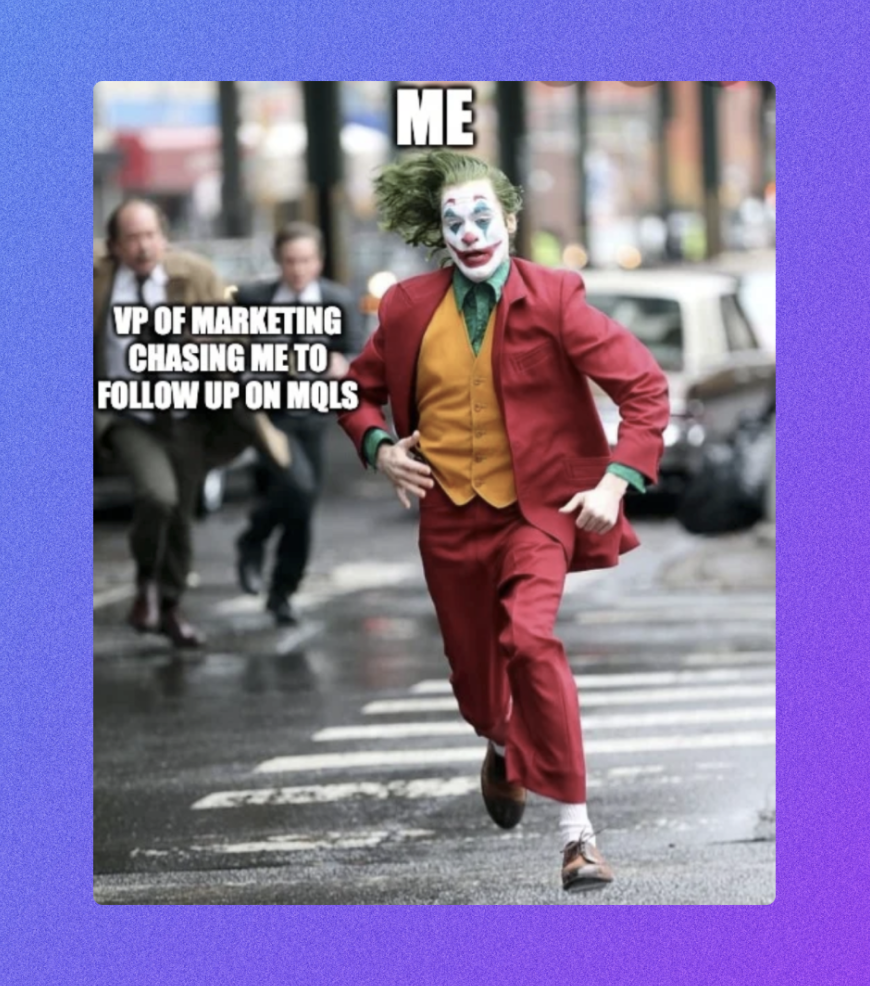
The plain and simple fact is -- it's, really, hard to get your sales team to rally around leads which didn't raise their hands for a sales meeting. Their job is already hard enough as it is, and they have to prioritize their time.
I received an email from Drift the other day that summarizes this problem exceptionally well:
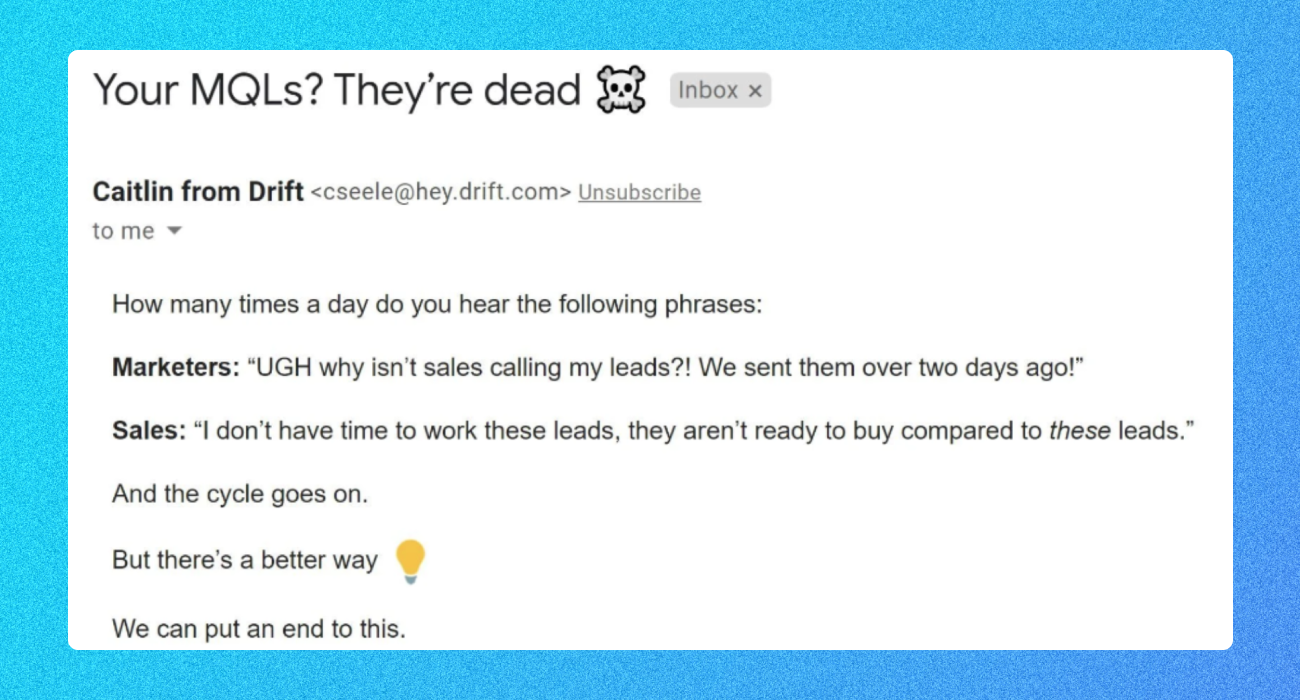
If you want to fix the issue once and for all, good intentions are not enough.
You need to build a mechanism.
You need a way to ensure that lead measurement starts when a buyer is ready to have a conversation with your sales team. At Saleswhale, we call these leads hand-raisers.
The old way of measuring marketing on MQLs (instead of sales-ready hand-raisers) distorts this measurement and results in misaligned incentives. The challenge outlined above is where automated lead conversion systems come in.
Traditional vs. Automated Lead Conversion
Traditional lead conversion systems use lead scoring and manual lead assignment to prompt humans to follow up.

Automated lead conversion systems help marketing teams engage, qualify, and follow-up contextually with leads.
With the single-minded goal of surfacing hot leads ready for a conversation ("hand-raisers") to pass to the sales team.
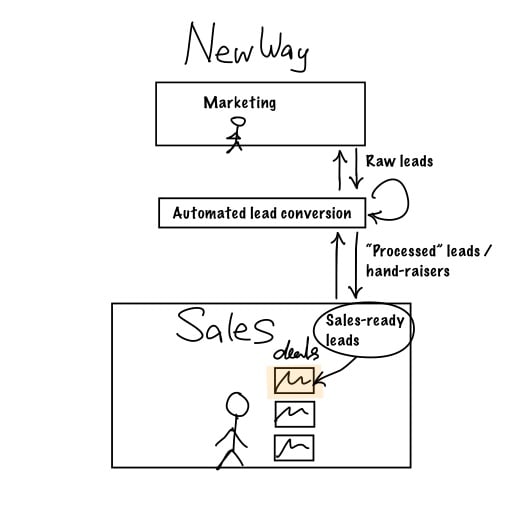
Some systems also take care of the back-end. Routing logic to the right sales reps, scheduling meetings onto Google calendar, collecting conversational data such as rejection reasons, and piping data between applications etc.
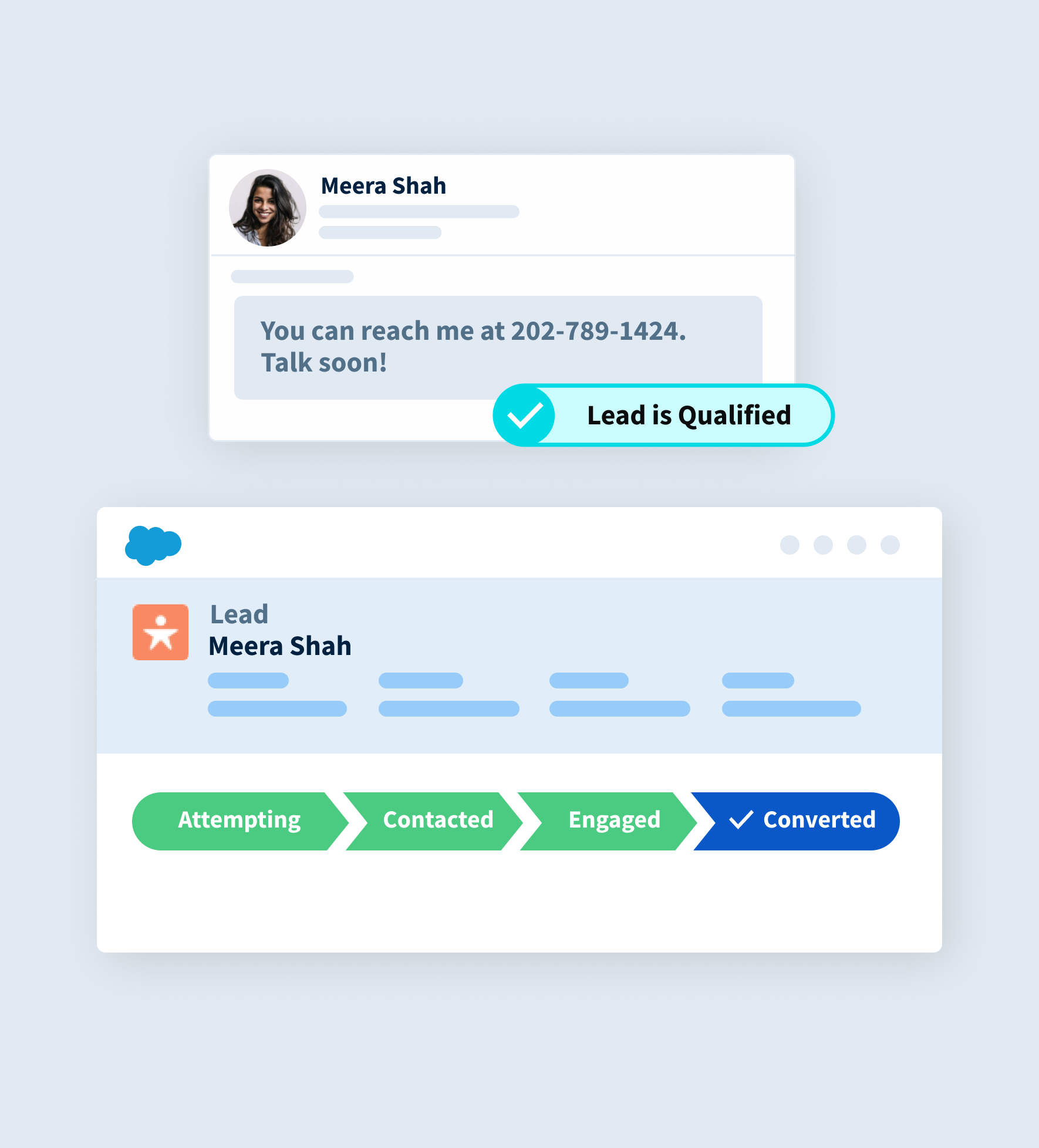
I could go on (and I just might, if you want to hop on a call). But the point is, automated lead conversion systems can make all of what I just listed happen automatically in the background.
How Automated Lead Conversion works
There's a new standard marketing stack that has emerged in the last few years. It's centered around a system of record / CRM that can support both traditional and automation lead conversion systems.
It consists of:
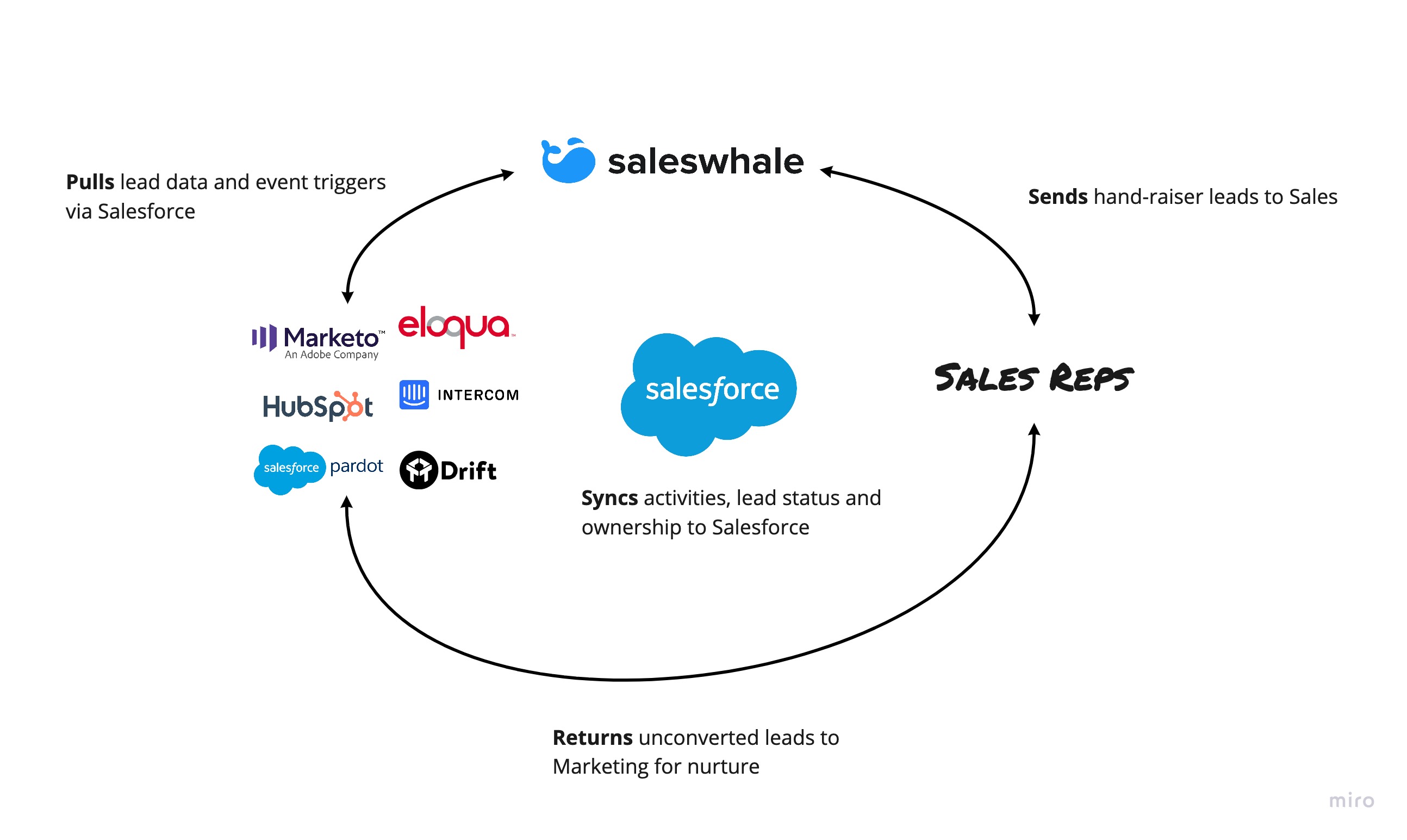 A conceptual way to think about this marketing stack is as a hub and spoke where Salesforce serves as a "hub" for all data.
A conceptual way to think about this marketing stack is as a hub and spoke where Salesforce serves as a "hub" for all data.
From this, "hub" extends "spokes", which are places your lead activity data flows to and from.
Automated lead conversion platforms like Saleswhale (that's us!) integrate with your marketing stack and pull usable data to automate the lead conversion journey.
Here's an example scenario of how it works in action.
An automated lead conversion system in action
A lead in your database attends a webinar and indicates in a poll that they are actively looking for a solution.
They visit your pricing page and download a case study. This activity trips the lead score threshold in your marketing automation system, and the lead is assigned to a sales rep to follow up.
Unfortunately, this adds to a queue of 100+ leads already previously assigned to this sales rep. Who has learned to ignore the "noise" of system generated leads.
Your Automated Lead Conversion system notices that your sales rep, within 48 hours, did not follow up the lead, and it kicks in.
It reaches out to the lead conversationally via email, and begins a back and forth conversation with the lead.
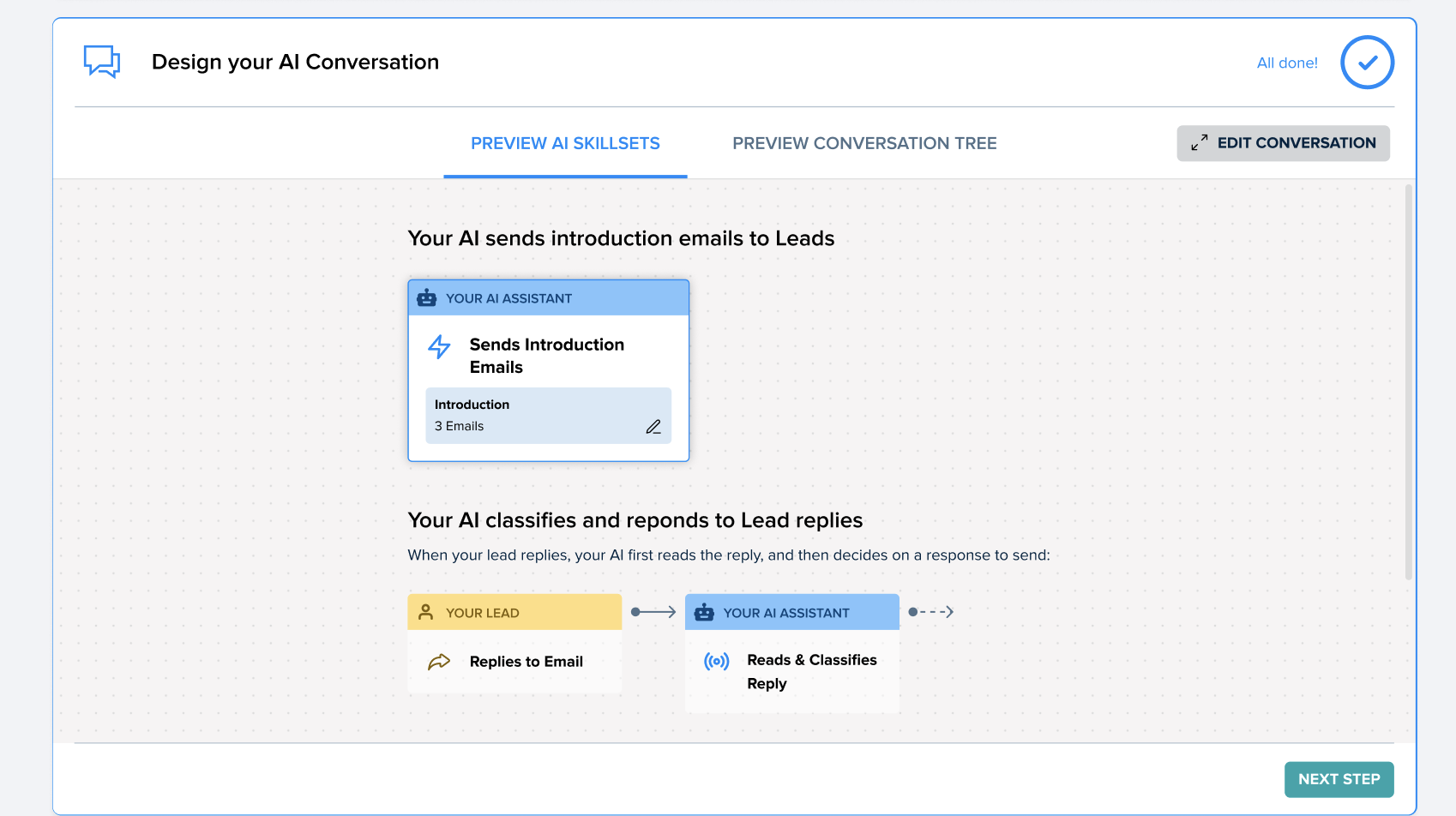
The lead eventually raises their hands and indicates that they want to speak to a sales rep to learn more.
.png?width=1648&name=Screen%20Shot%202021-01-06%20at%203.27.37%20PM%20(1).png)
The automated lead conversion system then loops in the sales rep directly into the email conversation by cc'ing them directly into the email thread.
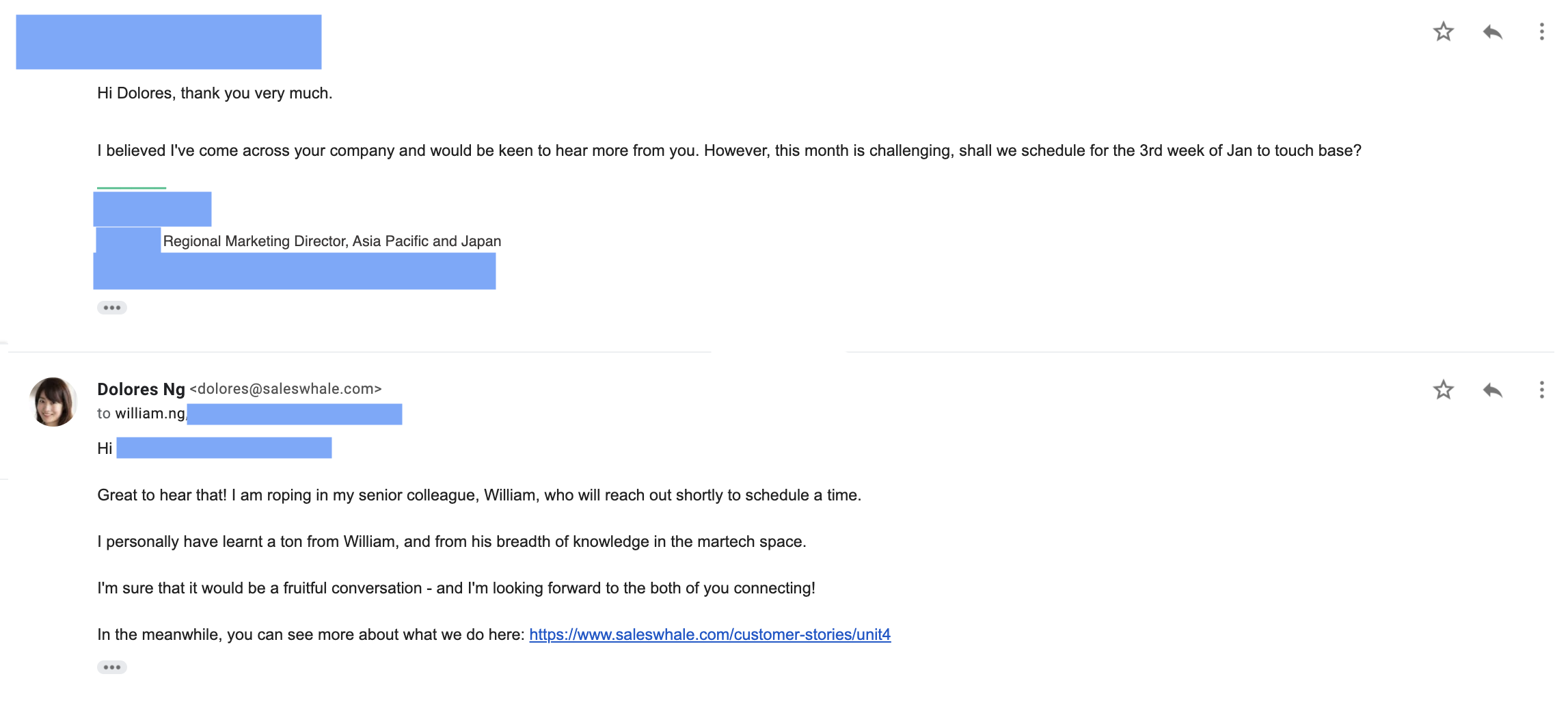
In a nutshell, an automated lead conversion system can initiate contact at the right time, deploy the relevant email playbook, use AI to interpret responses from leads, handle replies autonomously, and hand over leads to your sales reps.
%20(2).jpg?width=1633&name=2021%20Planning%20(12)%20(2).jpg)
The idea is to build a "lead safety net" that runs autonomously in the background.
It's worth mentioning that automated lead conversion systems aren't a replacement for human sales reps or SDRs. Neither are they intended to replace your marketing automation tools.
They solve specific gaps in the middle of the funnel for modern B2B marketing and sales teams.
There are three reasons why I think every marketing and demand generation team should consider implementing an automated lead conversion system:
1. ROI on marketing budget
2. Close the loop on marketing attribution
3. Control
Marketing budgets are tight right now. Every single dollar is being scrutinized for ROI.
Automated lead conversion systems ensure that you get maximum yield out of your marketing programs by allowing you to maintain close to 100% coverage on neglected leads. So no marketing lead goes to waste.
We have seen customers drive anywhere from 20% to 250% more pipeline from their existing leads - just by automating and optimizing their lead conversion process.
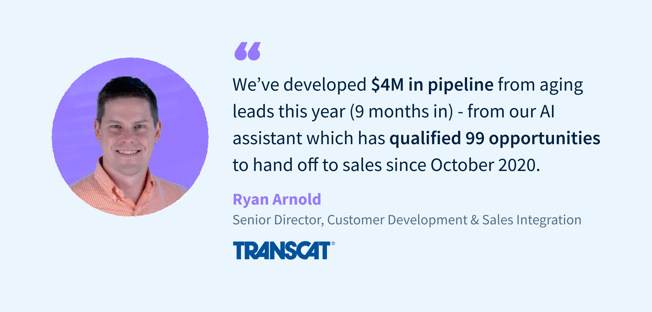
As a marketer, how would you know which channels definitively have higher ROI than others - when the coverage of marketing qualified leads being worked on by sales is so uneven?
If a tradeshow event fails at generating pipeline and revenue, was it (a) because your marketing team did a bad job, (b) tradeshows don't work for your business, or (c) sales didn't have time to work the tradeshow leads?
This skews your data, and makes it hard to understand which channels to focus on and how to optimize your acquisition cost.
Automated lead conversion systems put marketing back in control over the leads they generate.
Marketing: "You are not following up with my leads. You are not booking meetings with them."
And Sales is like: "Well, we have better things to do."
Most marketers don't like that. Especially those of us who are measured on pipeline and attributed revenue.
If given a choice, most marketers would want to own more of the funnel.
So we can tell Sales, "You can just focus on your sales meetings and having lots of conversations, we will do the rest."
An automated lead conversion system helps you do just that.
Marketing sets and forgets. Sales get hot "hand-raisers" ready for a conversation.
The alternative is relying on your sales reps to take the initiative to follow up with each lead.
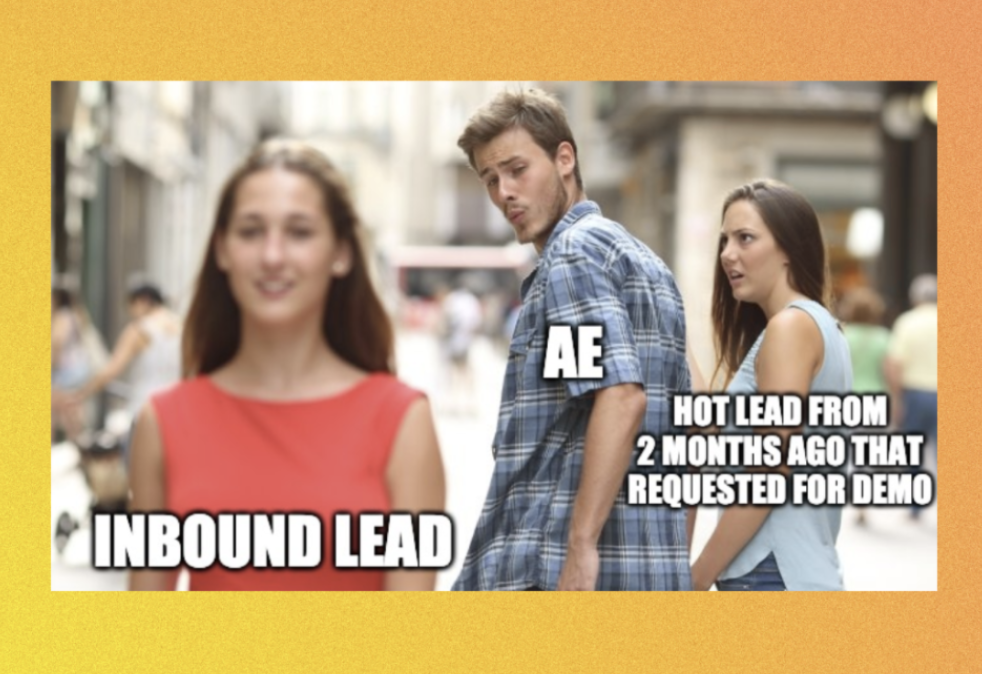
Summary
As a marketer, I love automated lead conversion systems because it allows marketing teams to play a more proactive role in sales pipeline creation & revenue generation.
It automates away a large part of brain-draining tasks for sales & marketing teams, so everyone can spend more time doing actual work.
A new generation of marketing teams, powered by automated lead conversion systems, can build powerful workflows and automation on how they want their leads to be followed up with.
Are you interested in finding out more?
Schedule a Saleswhale demo today, and we will get your automated lead conversion journey rolling.



Co-founder & CEO at Saleswhale
Sign up for cutting edge ideas on conversational marketing, AI assistants and martech.

Saleswhale for Salesforce allows you to build powerful automated lead conversion workflows. This allows you to re-engage with your neglected marketing leads at...
19 APR 2021
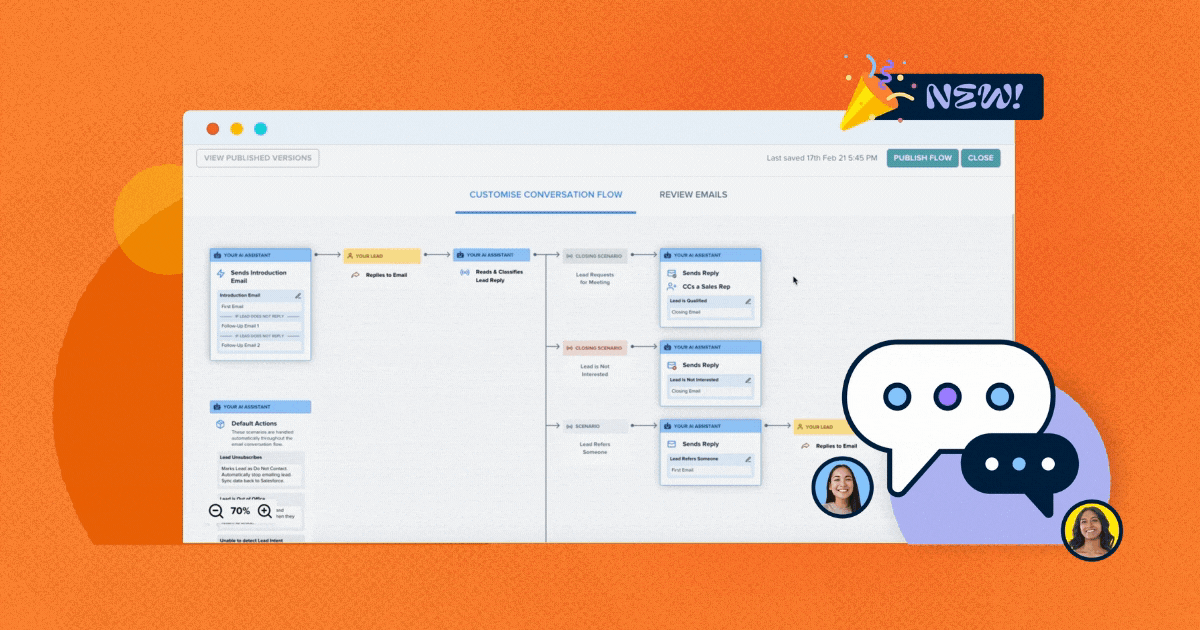
Demand generation and marketing teams generate more leads at the top of the funnel than ever in this new digital-first world. Saleswhale helps ensure those...
1 MAR 2021

Marketers that focus on MQLs end up doing the wrong things in order to achieve the metrics. So I changed it.
16 JUN 2020
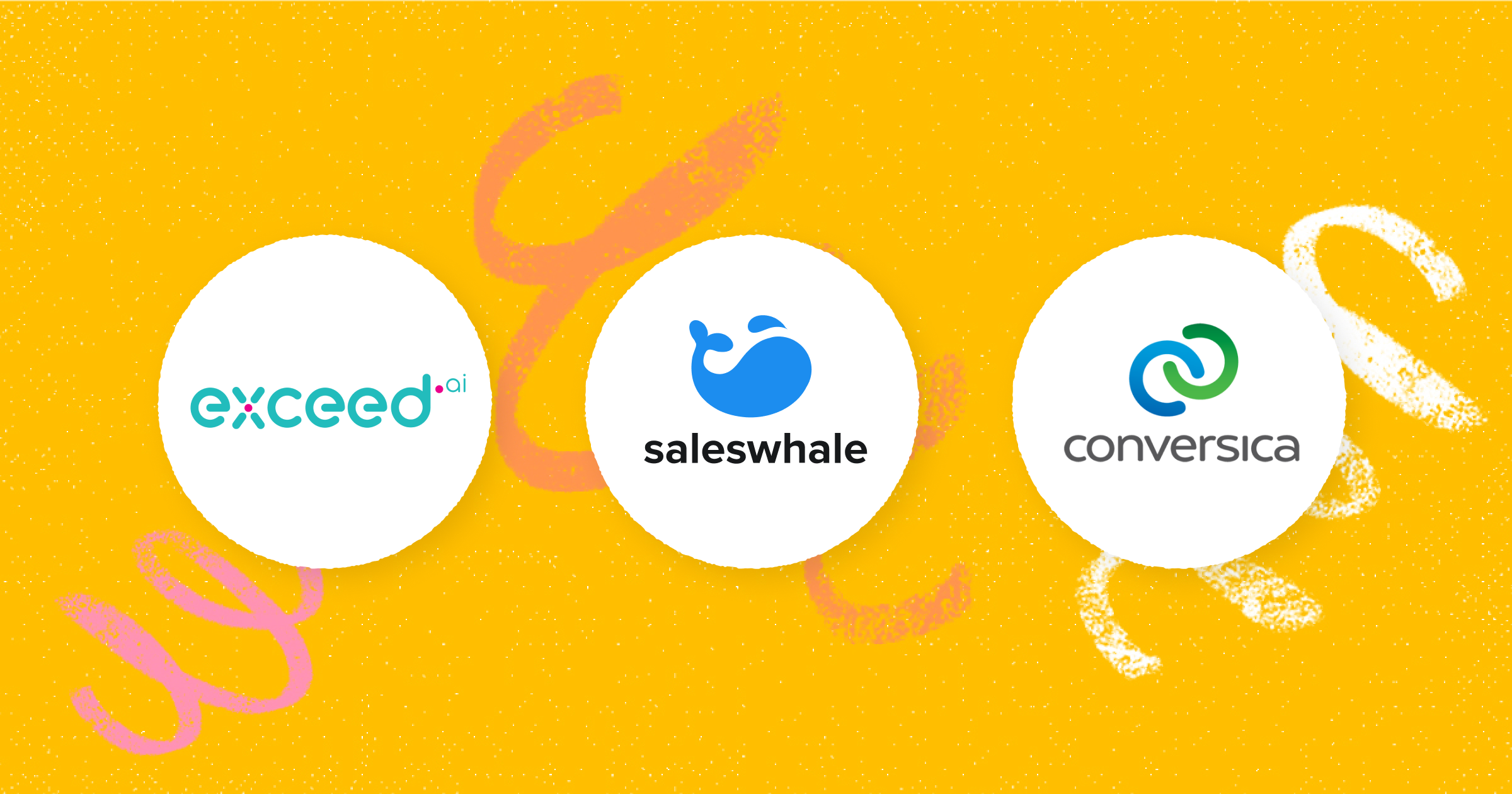
Conversica isn't the only player out there. Learn how Saleswhale and Exceed.ai compare and make an informed decision.
15 APR 2021
By providing your email you consent to allow Saleswhale to store and process the personal information submitted above to provide you the content requested.
You can unsubscribe at any time by clicking the link in the footer of our emails. For information about our privacy practices, please visit our privacy page.